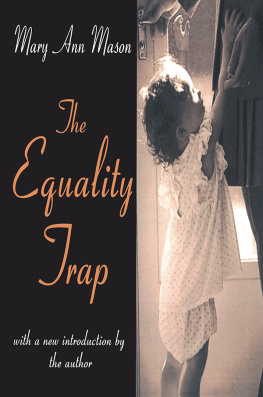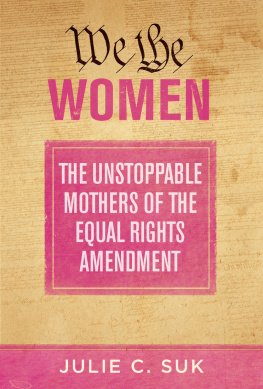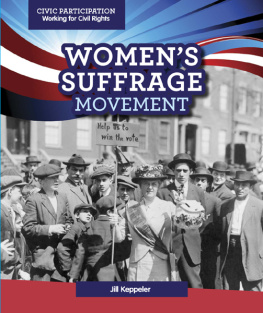Originally published in 1988 by Simon and Schuster.
Published 2002 by Transaction Publishers
Published 2017 by Routledge
2 Park Square, Milton Park, Abingdon, Oxon 0X14 4RN
711 Third Avenue, New York, NY 10017, USA
Routledge is an imprint of the Taylor & Francis Group, an informa business
New material this edition copyright 2002 by Taylor & Francis.
All rights reserved. No part of this book may be reprinted or reproduced or utilised in any form or by any electronic, mechanical, or other means, now known or hereafter invented, including photocopying and recording, or in any information storage or retrieval system, without permission in writing from the publishers.
Notice:
Product or corporate names may be trademarks or registered trademarks, and are used only for identification and explanation without intent to infringe.
Library of Congress Catalog Number: 2001034721
Library of Congress Cataloging-in-Publication Data
Mason, Mary Ann.
The equality trap / Mary Ann Mason ; with a new
introduction by the author,
p. cm.
Originally published: New York: Simon and Schuster, 1988.
Includes bibliographical references and index.
ISBN 0-7658-0740-8 (pbk. : alk. paper)
1. Divorced mothersUnited StatesSocial conditions. 2. Divorced mothersEmploymentUnited States. 3. Working mothersEmploymentUnited States. I. Title.
HQ834.M33 2001
306.89dc21
2001034721
ISBN 13: 978-0-7658-0740-3 (pbk)
Acknowledgment
The stories of the women I relate in this book are a small fraction of the women whose stories have inspired this undertaking. The names and situations of the women whose stories I do use have been altered to protect their privacy. I thank them for sharing their lives.
Many friends and colleagues have assisted me by their thoughtful reading of parts of the manuscript in progress. They gave me both emotional and practical support. Often at a point where I was weary and losing confidence as well as energy, a reader would call and say something like Youve really got your finger on something, but... It was the positive response that kept me going, and the but that made me take yet another hard look at what I had written. These are some of my kind critics (in alphabetical order): Rachel Bradley, Jo Carson, Karen Faircloth, Neil and Barbara Gilbert, Laura Karstensen, Annette Lawson, Bogna Lorence Kott, Madeline McLaughlin, Linda Mihaley, Clark Moscrip, Linda and George Moss, Maureen OSullivan, Sally and Bob Ornstein, Mindy Thomas, Leslie Zwillinger.
I am particularly indebted to Dr. Judith Wallerstein for sharing information on custody and divorce not available in print.
Special thanks to my research assistant, Carli Hegli, who showed equal proficiency in finding information in the law library and the popular-magazine stacks.
I am grateful to my agent, Carol Mann, who showed enthusiasm in the project when it was still a glimmer in my mind, and to my editors at Simon and Schuster, Jane Isay and Bob Bender, whose intelligent criticisms prompted revisions that were not always welcomed but were always right.
My best editor and critic has been my husband, Paul Ekman. Every one of the ideas and every page of the text have been scrutinized and improved by his sharp probing. This level of attention could only be considered a work of love, which it was.
I thank my children, Tom and Eve. They are the reason I wrote this book.
When the Equality Trap was published in 1988 it met with hostility from many feminists. Its central theme, that a push for gender-blind equality before the law did not address the needs of most women, and, in fact, had unintended negative consequences for women with children, was not a welcome message. Feminists were particularly opposed to the suggestion that mothers needed special consideration, not equal treatment. Wounds were still fresh from the recent unsuccessful campaign for an equal rights amendment to the constitution. Millions of dollars and millions of hours had been spent in this futile attempt, but most feminists still believed that legislating gender equality would make it so. One interviewer called me a traitor to the movement. You got where you are on the back of the movement and now you want to destroy it! she accused.
As a family law practitioner, I would explain, on talk shows and interviews, that the no-fault divorce revolution, an egalitarian approach to divorce and to custody, had brought great economic and personal hardships to women with children. The institution of marriage, previously protective of mothers and children, no longer provided security for raising children until adulthood and offered mothers little support following a breakdown of the union. Judges and legislators had heard a distorted message from the Equal Rights campaign, that women were now able to take care of themselves as well as men could. Alimony and child support were awarded grudgingly or not at all. In my practice I encountered women who had married under a different marriage contract, had been promised lifelong security, and now were faced raising children alone under conditions of extreme hardship. Child custody, with its new emphasis on equal parental rights, had become a battlefield in which children were hostages and sometimes served as bargaining chips in support and property negotiations.
And for most women, I argued, equal rights with men in the workplace was meaningless. A huge and growing swell of women were being forced into the workplace by necessity not choice. They were working in low-paying, female-dominated occupations, as secretaries and salesgirls, trying to help support a family. They were, as I saw it, working to live. The dramatic shift from a manufacturing to a service economy, which occurred in the seventies, rendered the concept of a family wage, earned by a relatively well-paid union member father, an anachronism. Their husbands lower wages were driving mothers into the labor market in unprecedented numbers. Equal treatment with men was not at issue for these service-sector workers since there was no career ladder and their co-workers were mostly women. These mothers needed special consideration: practical, everyday support like childcare, maternity leaves, family health benefits, and part-time tracks.
The great majority of American women workers, in my opinion, were working to live. They were striving to make ends meet in womens occupations and were not entering high-paying male-dominated occupations such as law, medicine, and corporate management. But it was the relatively small class of women who were trying to push into the high-stake male professions, women who were living to work, as I called them, which drove the feminist movement. These were the women who hated this book. They were not greatly concerned with secretaries or poor single parents. From their perspective at the time, equality meant breaking into the male-dominated professional and corporate world. Achieving an equal footing with men in this world meant never asking for special consideration, even for motherhood. Maternity leave and the mommy track were deemed seditious concepts at the time, guaranteed to maintain women in a second tier, separate and unequal. They did not want to hear my warning that ignoring motherhood could set women up for failure.








